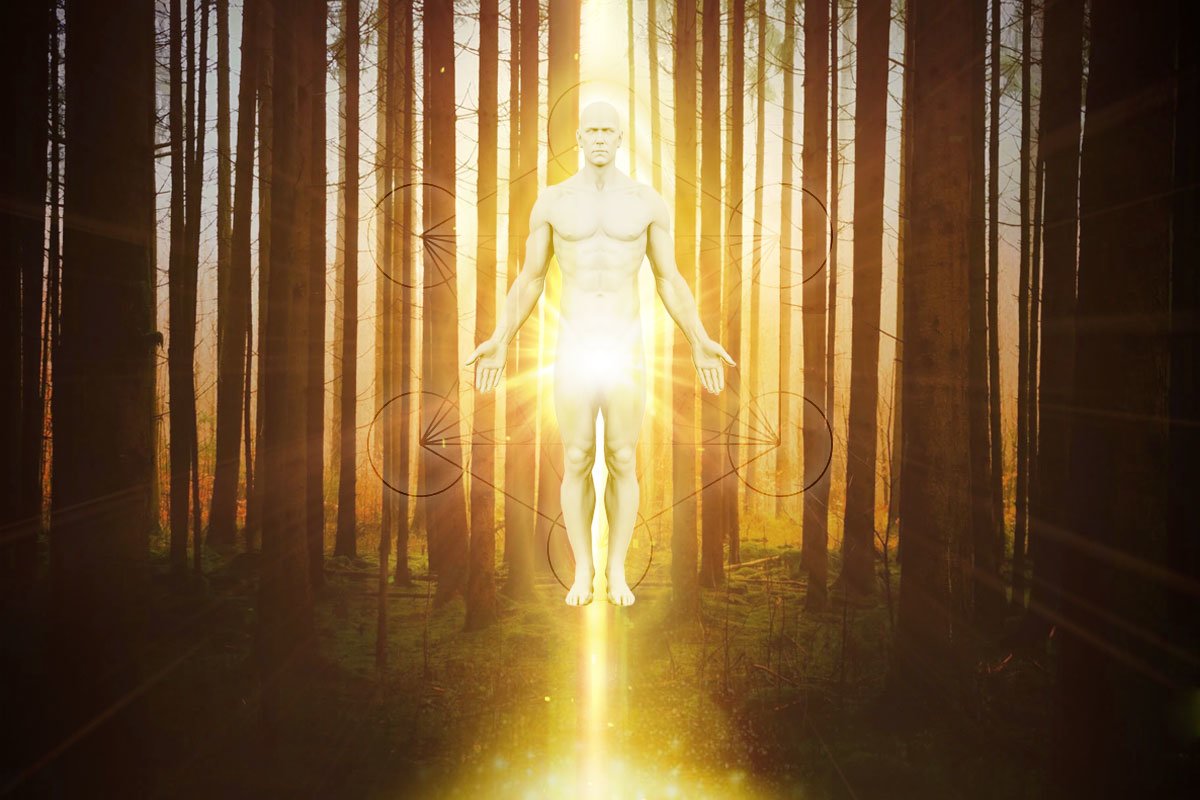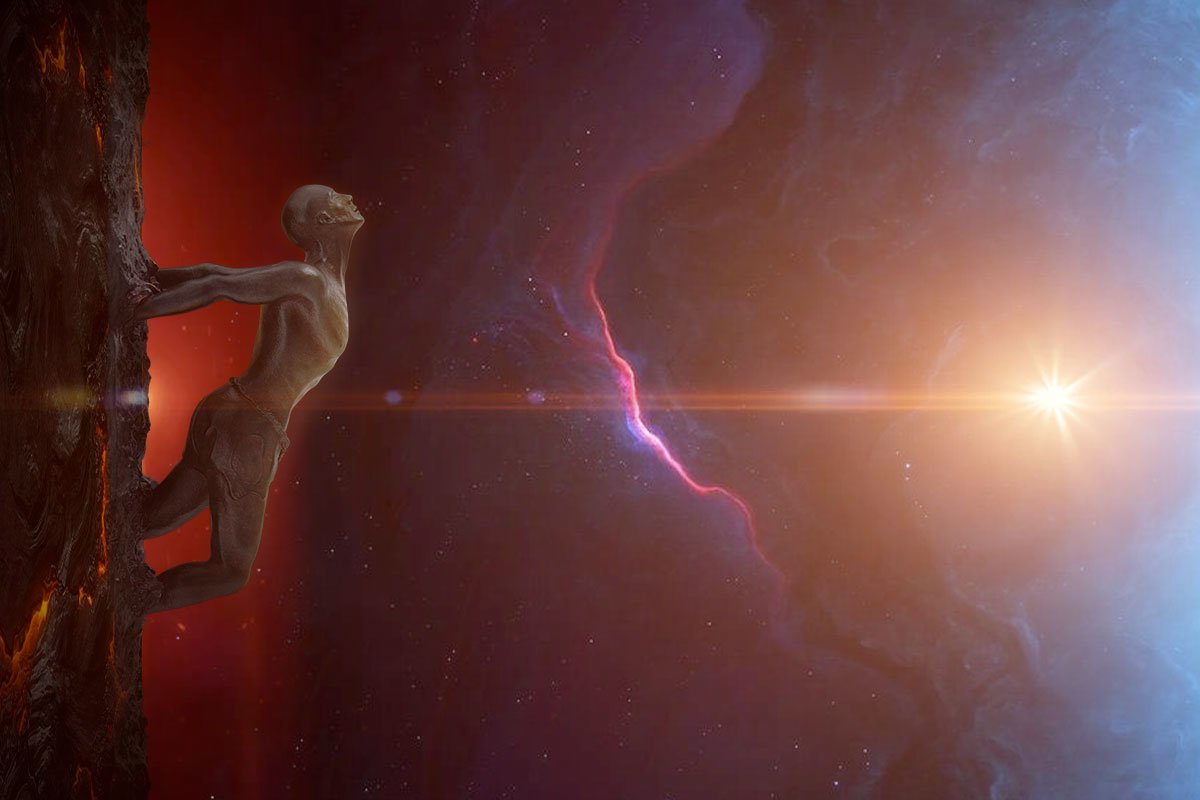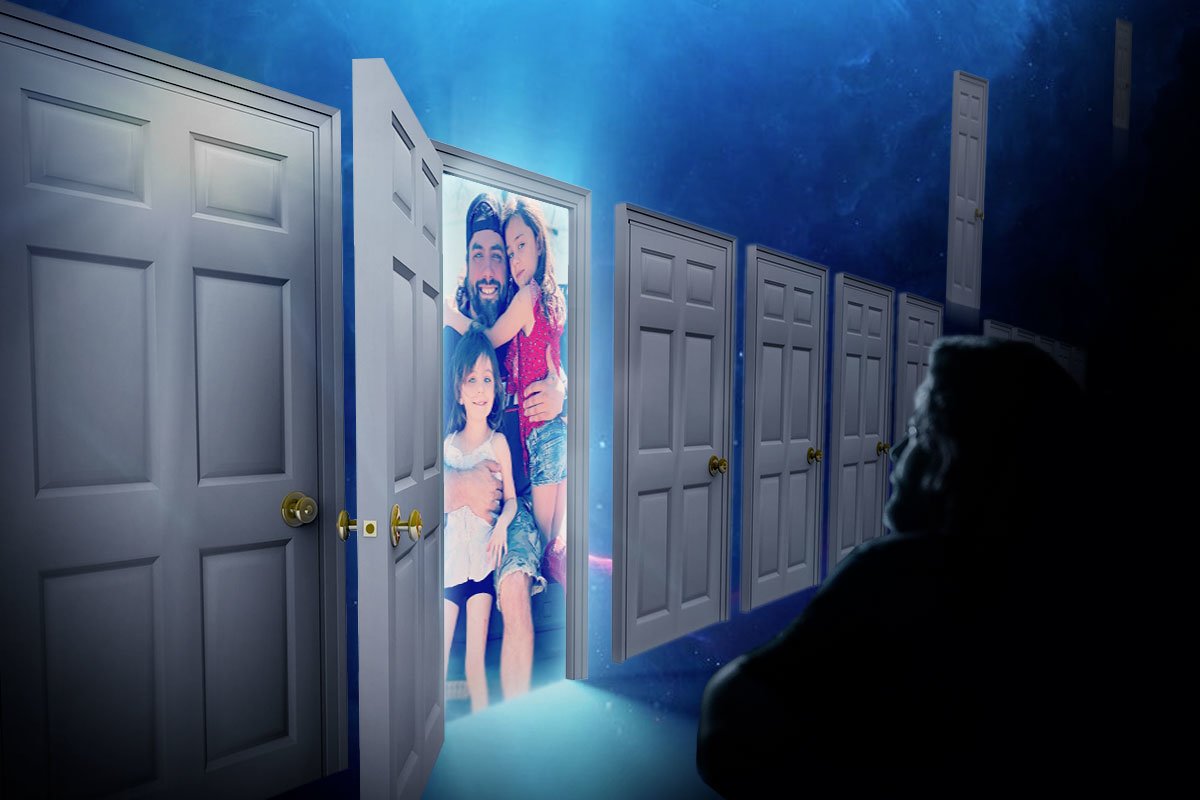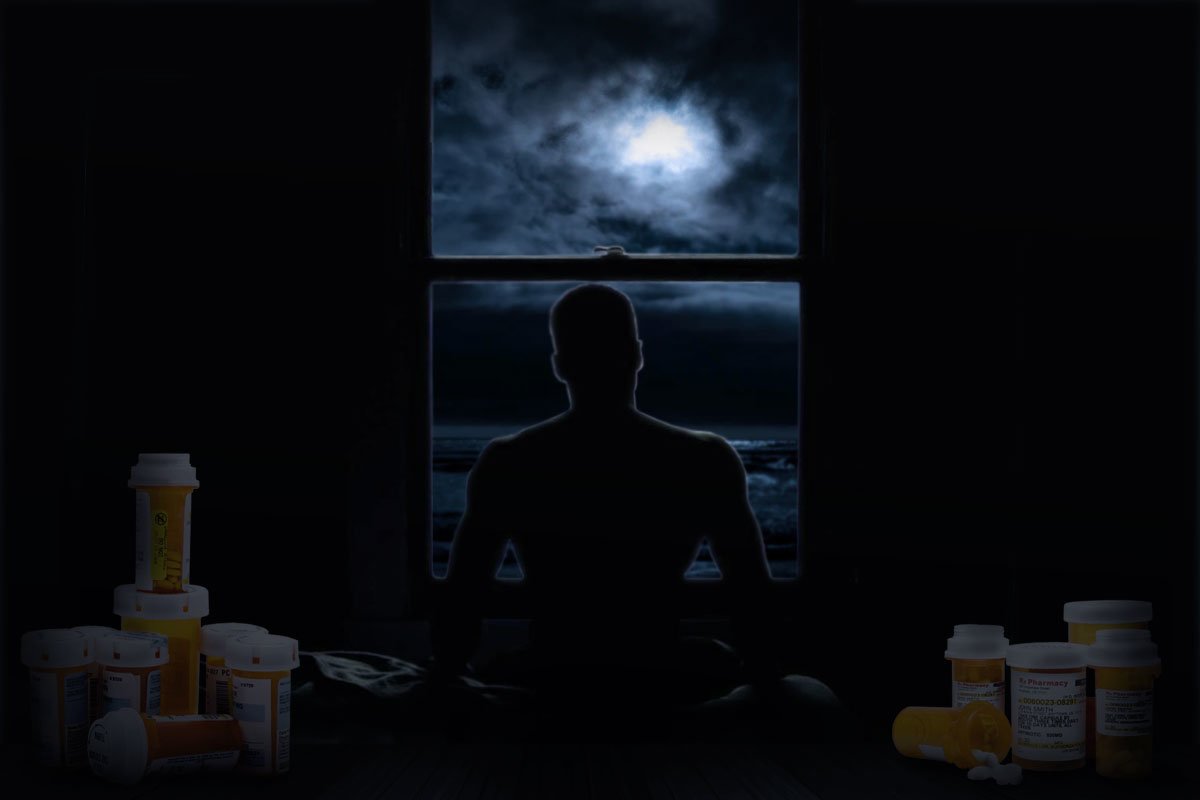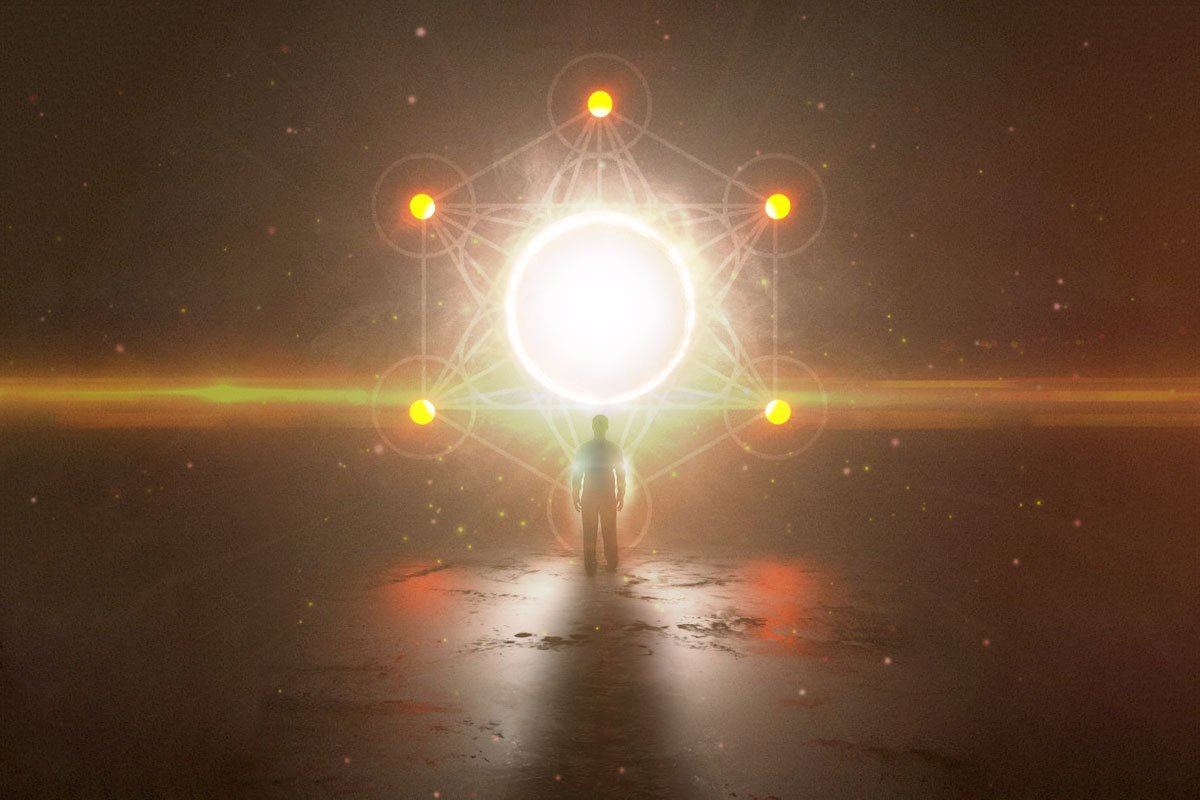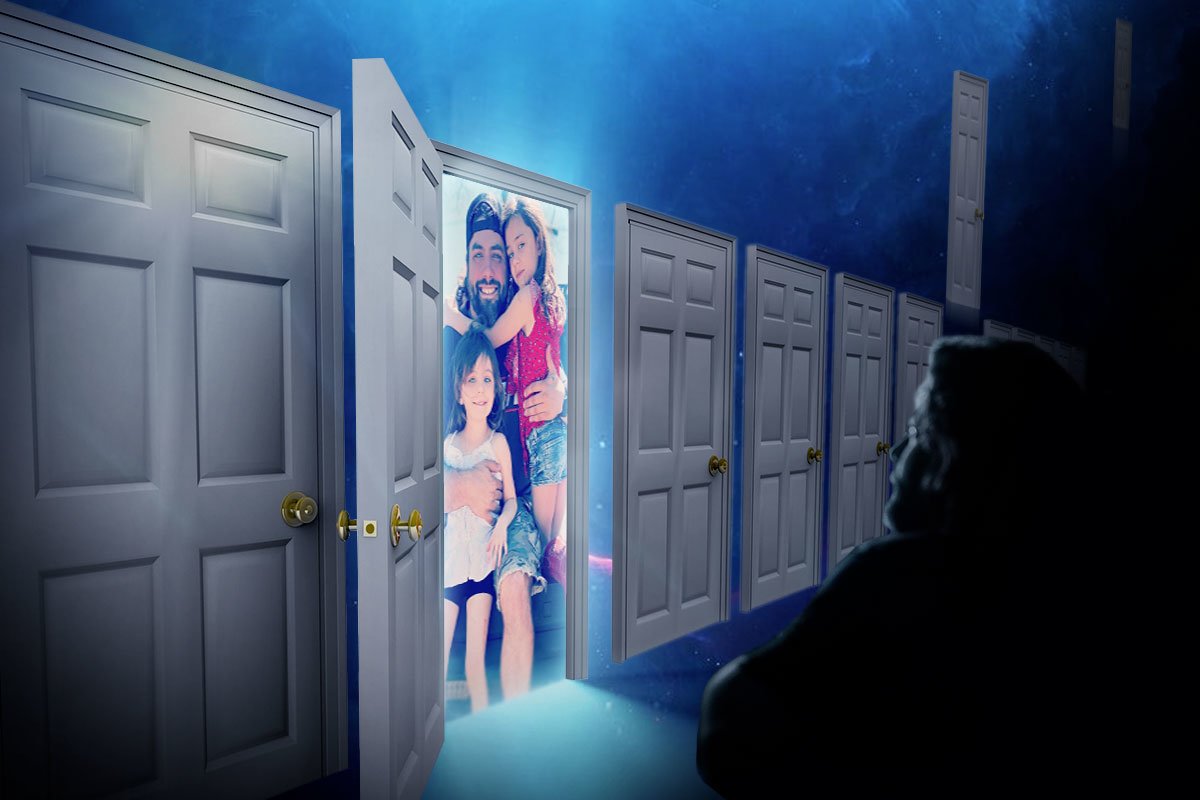Meeting God: Powerful Psychedelic Therapy Is Helping Some Wounded Vets Heal
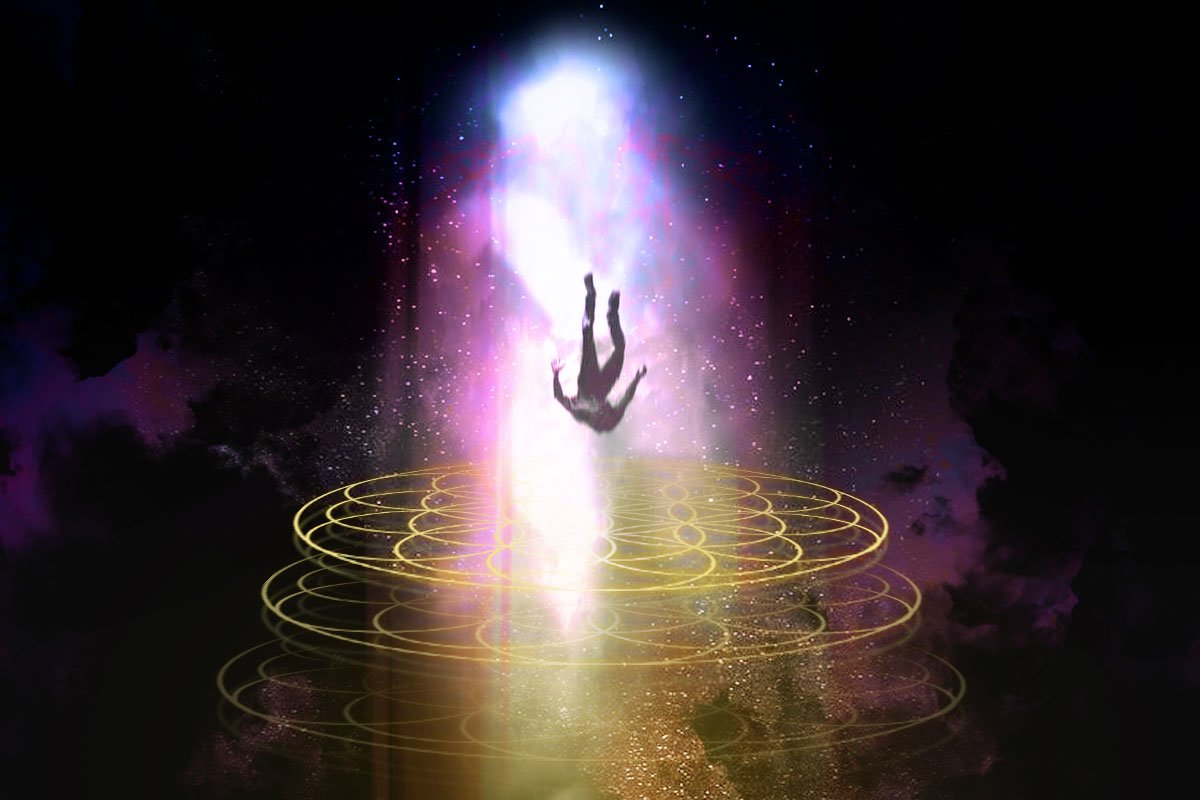
A bed in white linens sits in the center of a wood floor, lit by soft daylight streaming through large windows. Outside is a still desert landscape pockmarked with scrub brush and cactus. A veteran is on the bed, tattooed, laying still as a corpse.
A man next to him, also tatted up, with a calm face, asks the former airman if he’s ready. The only sign of life is his slow, hesitant, thumbs up. The calm man holds a mysterious little box to the veteran’s face. He tells him to breathe in for 10 seconds and hold the chemical vapor in his lungs for 10 full seconds. It is the same dark chemical the human brain secretes when it dies. Soon, there is no bed, no room, no calm man or windows or desert.
The veteran falls — through the floor, the desert, the Earth, through time and space. The physicality of this mortal body drops away. Others who have done this, who’ve taken this chemical, say they meet God or become part of an eternal presence that is God. With that, they say, comes a profound sense of psychological healing. Some early science supports this, and points toward what could become the next wave of treatment for America’s injured warriors.

“That time is now,” said Amber Capone, who with her husband, Marcus, a former Navy SEAL, founded the nonprofit Veterans Exploring Treatment Solutions (VETS), to bring awareness, education, and funding to veterans seeking psychedelic-assisted therapies. “The wave of veterans discovering these treatments now pairs beautifully with the psychedelic renaissance that’s happening worldwide. Everyone is seeing the benefits of these therapies.”
Psychedelic drugs have been used by various indigenous peoples around the world for medicinal, spiritual, and religious practices for millennia. Yet when they hit the popular consciousness in the United States in the 1960s and 1970s, they quickly were demonized as unsafe and illegal. Most psychedelics remain illegal in the US, but groups like VETS that see a therapeutic upside are helping Americans connect with overseas clinics exploring psychedelic-assisted tactics — and they hope to bring them to the US.
There has been a resurgence of interest in the therapeutic uses of psychedelic compounds not seen since most of them were made illegal in the 1970s. This group of drugs includes ketamine, MDMA, LSD, psilocybin — the active chemical in most “magic” mushrooms — ayahuasca and DMT, and ibogaine, or iboga. Most are being studied for treatment of post-traumatic stress, traumatic brain injuries, and other brain conditions related to combat.
“Progressively, with each passing year, the wheels just started to come off more and more,” Amber said of her husband. “From 2008 to 2017, so for almost 10 years, [his behavior and mental outlook] was getting progressively worse.” To address the problems, doctors prescribed as many as 10 drugs at a time. The array of pills did little for his severe depression and growing dependence on alcohol.
“The go-to medical model in military medicine, or the VA, is just pharmaceuticals. Those weren’t working. He was having a lot of cognitive difficulties. He couldn’t remember to take them or he would get the schedule off, and then that was a nightmare. It was just bad,” Amber said.
After the suicide of a close friend with similar symptoms and subsequent brain autopsy, Amber came to believe Marcus wasn’t just suffering from post-traumatic stress but possibly chronic traumatic encephalopathy (CTE), a condition linked to repeated blows to the head with troubling behavior and mood symptoms. Amber contacted charitable organizations that worked on CTE cases. Marcus visited a series of brain clinics, admitted based on his history as a football player and breacher in the Teams.
It turned out to be another dead end.
“We did that for about 18 months,” she said. “It was just not sustainable. Our life had become like Groundhog Day. Clinics, appointments, more meds. He didn’t feel he had anything to live for at that point. I’d been with him since I was 17 years old. We’d survived seven combat deployments and almost two decades together at that point, and I just didn’t want to leave him, but I didn’t think I could stay. I felt like I had to choose him or our children.”
With hope feeling lost, Amber remembered a friend who had sought psychedelic-assisted treatment outside the US. She brought it up to Marcus. He was adamantly against it. She persisted, and on Nov. 11, 2017 — Veterans Day — Marcus left for Mexico.
One of the most promising areas of research involving psychedelics is in combating addiction, according to Peter Hendricks, a clinical psychologist and professor in the School of Public Health at the University of Alabama in Birmingham.
Hendricks’ work focuses on developing more effective treatments for addiction and related conditions. He’s in the midst of a trial intended to determine if “one administration of psilocybin will lead to a significant reduction in cocaine use relative to placebo,” and he said early results are extremely promising. A colleague of his, Matthew Johnson at John Hopkins University in Baltimore, Maryland, conducted a pilot trial using psilocybin as an aid for smoking cessation.
“It was small, there was no placebo comparator, but 12 of the 15 people who were given psilocybin quit smoking,” Hendricks said. “That’s 80 percent. That’s wonderful.”
A number of veterans who have fought during the past 20 years in the Global War on Terror have returned home with physical and physiological or emotional ailments, including substance dependency, which too often proves beyond the scope of prescription medicine and conventional therapies.
“The experience many people have with a psychedelic is one where they feel connected to others. They feel more like a part of a whole than an individual. A sense that ‘We’re all in this together,’” Hendricks said. “I’ve often argued, our veterans, in many cases, have quite literally sacrificed their own lives for something bigger than who they are, for people they’ve perhaps never met; they’ve put their lives on the line for a cause or their country or people they love. And that is, you might say, a very psychedelic notion.
“It’s about a cause greater than self. It’s about doing something transcendent. We’re talking about a population of people who have explicitly said, ‘I’m willing to do that, to lay down my life,’ for an idea. We have to have nothing but respect for those people. If these veterans already understand that idea of transcendence, of sacrifice, then they might really be the ideal candidates for these drugs.”
The biggest hurdle for Hendricks’ work and research like it is funding.
“We need funds to recruit participants,” he said. “We have to pay for TV ads. We have to pay for the drug product, for the resources to administer the drugs, for the medical staff supporting the work we do. The research enterprise can be pretty darn expensive. To do a study requires a lot of funds, and the funds aren’t quite there.”
Marcus’ first psychedelic experience in Mexico wasn’t a magic bullet, but some changes were immediately apparent to Amber.
“I felt like he was much more himself, more the person I met in college and easy to be around,” she said. “His darkness was gone, his demeanor was changed, he was happy, he was smiling. The first thing he said to me was, ‘This is exactly what all the guys need. We’ve got to start raising money, and we’ve got to help.’”
Amber and Marcus began slowly raising money, hand-picking friends they knew could benefit from psychedelic-assisted therapy, and introducing them to the concept.
“I wanted 12 months to go by and for 12 of our friends to have the same result, so we could tell if it wasn’t just effective for Marcus,” Amber said. “At the 11.5-month mark, one of my closest friends lost her husband to suicide. He was the last person I’d ever think this could happen to. I just could not come to terms with the fact that I had not shared Marcus’ experience with her. It was taboo in the community to, you know, be vulnerable.”
That veteran suicide, one of more than 6,000 in 2017 alone, drove Amber and Marcus to redouble efforts — taboos and resistance be damned. She and Marcus formed VETS, a 501(c)(3) nonprofit organization dedicated to educating veterans about the potential of psychedelic treatment and helping them obtain that treatment whenever possible, while also advocating on the state and federal level for these treatments to be legalized for medical use in the US.
VETS also provides grant funding to help veterans travel outside the US to clinics in Mexico, Costa Rica, and Peru, where certain psychedelics are legal. Last year, VETS assisted 110 veterans; Amber said the group is on track to help between 125 and 150 this year, depending on funding. VETS also has developed an e-course to provide basic education on psychedelic therapy and on choosing a retreat center.
“We exist to subsidize veterans, but we are not the end-all-be-all,” Amber said. “We are not a retreat, we are not providing treatments, we’re just providing education and funding. The fact that we’re now bringing our message onto the national stage is so humbling. I know that these guys can lead the way for change, not only for fellow veterans but for everybody.”
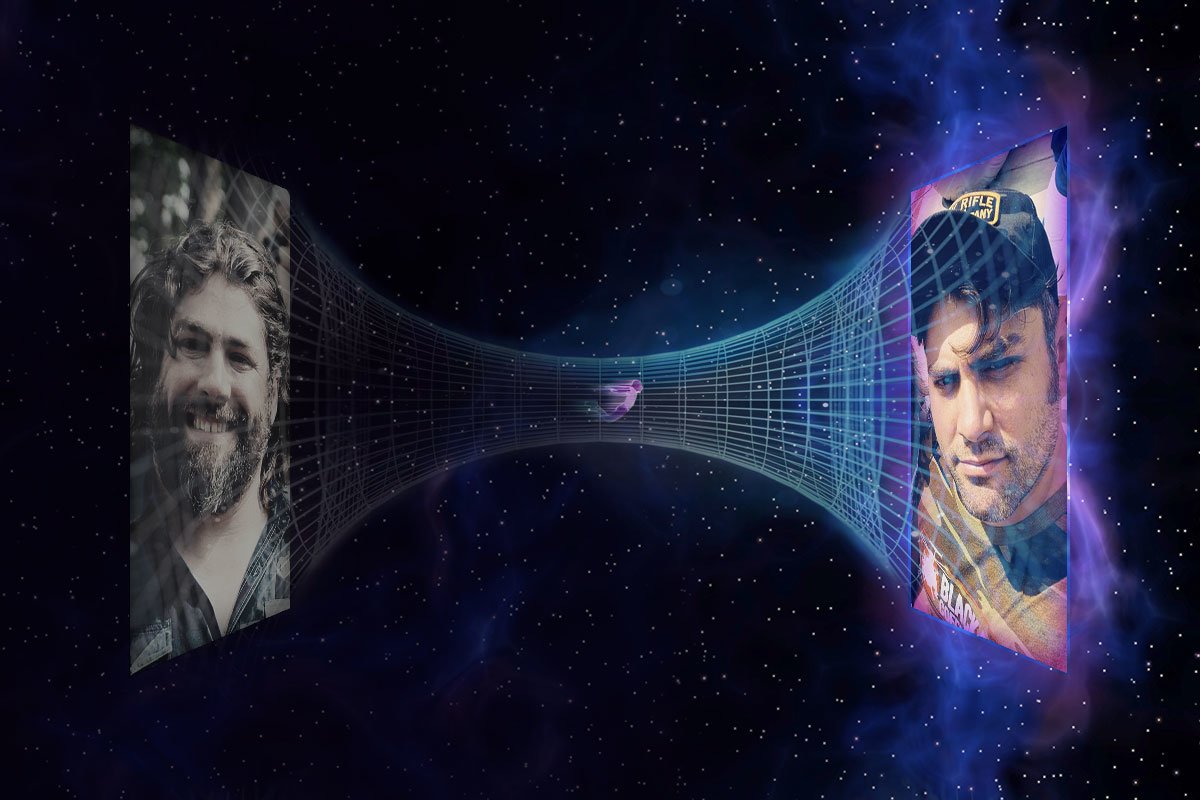
The airman on the bed with white linens in the desert was Black Rifle Coffee Company co-founder and former TAC-P Jarred Taylor. The chemical was 5MeO-DMT, called by some “the God particle.” On a recent trip to a clinic in Mexico with VETS and four other veterans, Taylor underwent the treatment. Yet 5MeO-DMT is the second of two psychedelics used for this particular course of therapy. The other is ibogaine, an extremely powerful and long-lasting hallucinogen.
Both of these drugs are naturally occurring, but little is known about exactly how they work in the brain and body. It is known that ibogaine can cause cardiac arrest in people with certain preexisting heart conditions. Before being treated at the clinic, doctors run blood and urine tests and record in-depth medical history to rule out patients with high-risk factors. The experience is also bookended by several counseling sessions.
Ibogaine is derived from a shrub called Tabernanthe iboga, which is native to Central Africa. Chances are you haven’t heard of it. It was never adopted as a “recreational” drug because it’s difficult to source, and it’s simply too intense for recreational use. Marcus Capone likened his experience with ibogaine to hell, and Taylor called it one of the most terrifying experiences of his life — that’s coming from two guys who have seen combat. Lots of it.
Blotter acid and psychedelic mushrooms aren’t in the same league as these substances. Hell, they’re not even the same sport.
Blotter acid and shrooms aren’t in the same league as these substances. Hell, they’re not even the same sport.
Ibogaine, in particular, lasts about 12 hours and pushes the mind to its limits of perception and introspection while leaving the body pretty much useless. Those who’ve taken it say it dissolves the ego, lays bare one’s innermost self, and then proceeds to force the user to reckon with the darkest and most deeply buried parts of their own mind. It can be a wondrous, blissful journey into universal oneness and a communion with a higher power. Alternately, it can be a hellscape of one’s own deepest fears.
For most people, the drug temporarily obliterates the sense of balance, which typically leads to vomiting. Marcus said he puked for six hours the first time he took ibogaine, but those who have been through it don’t call it puking, they call it “purging.” The idea is that the more memories, negative feelings, and emotions a person needs to be rid of, the more they’ll vomit — a physical manifestation of the mental purging that takes place during the experience.
Taylor said he went into the therapy with no real expectations, only looking for something that might help him deal with issues he’s faced after 11 years on active duty such as memory problems, anxiety, depression, and alcohol abuse.
“I called one guy who I knew had done it, and he was like, ‘Man, it’s life-changing. It’s also very, very difficult.’ Those were the two pieces of information that were given to me,” Taylor said. “I didn’t really know what it would be until I did it.”
He and the four other members of their group were given ibogaine in the form of a capsule containing an appropriate dose based on their height and weight, as determined by the clinic’s medical staff — including a cardiologist. They rode out their trip together in a large room, each man in his own bed hooked up to an EKG monitor with an IV port in his arm, guided by a carefully chosen playlist of music that they would also use in the coming weeks for meditation. They had the option of wearing blindfold-like eyeshades.
“Within the first few seconds of this thing taking hold of you, you realize how powerful your brain is,” Taylor said. “When it would show me someone I love, it would package every good emotion and feeling that goes along with that, times it by a thousand, and throw it at me all at once. It would overtake your whole body. But that happens for all the negative emotions, too, like fear. You think there’s a ceiling to fear. There isn’t. You think, ‘I can only be so scared, and eventually I get numb to it.’ But no. It just gains speed. It packaged all the negativity, fear, anxiety, fucking sadness, and just gave it to me all at once. It puts it in a familiar format, as if it knows it needs to serve this to you in a way you’ll understand. I saw it as doors that would come in front of me that would open, and I’d go to whatever was in there. When we were done, the door would close, and it would go away.”
Matthew “Whiz” Buckley flew F/A-18 Hornet fighters for the Navy for 16 years. He was one of the four in Taylor’s group at the clinic. He, too, had very little idea of what he was getting into.
Buckley didn’t think he needed a treatment as intense as ibogaine or 5MeO-DMT, but after the clinic doctor heard about his service record, how he lost his father at a young age, and about how his sister was killed by a drunk driver when she was 19, he recommended Buckley get the same full course of treatment.
Their experiences were wildly different.
“I was in the bed next to him. We were 4 feet apart,” Buckley said. “The dude went through fucking hell, and my 12 hours was absolute bliss.”
“JT fucked it up, man,” he said with a laugh. “He wore his watch, and he didn’t use his eyeshades. I took my watch off, I put the eyeshades on, and I had 12 hours with God, the universe, my dead sister and father — you wouldn’t believe how good mine was. Then, halfway through, I hear the devil being born next to me as JT was puking. One of the other guys in the room was violently ill, as well, but it’s not sick-to-your-stomach sick, it’s purging. They’re getting rid of shit.
“When JT and I sit together and we tell our stories, he’s like, ‘The bookcase was attacking me.’ And I’m over here talking about being with God, literally under his arm, looking at pieces of my life, at shit that wasn’t meant for me. I can’t put my experience into words, but it was not JT’s.”
“And I’m over here talking about being with God, literally under his arm, looking at pieces of my life, at shit that wasn’t meant for me.”
In the end, the point of it all, according to the Capones who helped facilitate this trip, is to experience a deep, cleansing existential catharsis down to the root of self, which is where many believe the lasting healing effects come from.
As for 5MeO-DMT, it works differently and is even more mysterious than ibogaine.
“We don’t know a whole lot about it,” Hendricks said. “It’s often referred to as the active component in the venom from the Sonoran Desert Toad, which is really interesting. It’s generally vaped, and the experiences appear to be extraordinarily intense. I don’t know that we know a whole lot about 5MeO-DMT, however, or how it works.”
The more common DMT is a powerful psychedelic itself. It’s very closely related to 5MeO-DMT, which is a methoxylated derivative, but its effects are quite different. Whereas DMT is a largely visual hallucinogen that’s usually ingested, 5MeO-DMT has been called the “God particle” and “the death molecule” because of the extremely powerful out-of-body experiences it produces.
Many say DMT is released by the human brain when a person dies. Hendricks said he’s heard that, too, but the science is spotty. There’s no hard proof of that — yet.
“DMT is present in the brain, but is it released upon death? Who knows,” he said. “The brain is a complicated bundle of a number of chemicals. There’s so much we don’t know about the brain, how it functions, or what it does. [DMT] is considered an endogenous chemical, so yes, it’s in our brain in trace amounts. What it exactly does, we don’t entirely know.”
The effects are relatively short-lived, about 15 minutes or so per dose, but that doesn’t really matter to the user, who has no real concept of time. More than one dose may be needed before the user can “let go.” It’s also a solo experience. At this particular clinic, patients sit on a bed surrounded by pillows as the drug is administered.
“First off, it’s a feeling you’ve never felt before, and it’s very confusing and you don’t understand it. So you’re fighting it at first,” Taylor said. “You’re used to being in your own head, talking to yourself, being able to think, being in control, knowing you’re breathing, everything like that. This is on a whole different level. You have to just let it take the wheel. That’s for everything — breathing, your heart beating. You have to just say ‘Okay, I submit.’ And once you do, once you let go, you can experience infinity. There’s no way to explain it. There’s nothing on earth that’s comparable to it at all.”
On an episode of the Free Range American podcast, Taylor talks about waiting for his turn and hearing a group member going through a wild 5MeO-DMT experience and being disconcerted by the prolonged, pained bellowing he heard coming from upstairs. That was Buckley making all the racket at the tail end of his DMT experience.
“As I laid back into the bed, I kept going,” Buckley said. “There wasn’t any bed. You just fall into everything. You literally feel like you are a part of everything. I know what happens when I die now. I felt what it was like to dissolve into everything. I died. All those layers that are between you and God disappear. I did the third hit, and it was like a horse kicking me in the back. I exploded into light, love, energy, God. I fucking transcended like a motherfucker and was with God, and God was me.”
The clinic doctors called this experience “transcendence” and said they’ve only seen it a handful of times.
“I went into a fetal position and every muscle in my body was tense,” Buckley said. “My face was red, like I was being reborn. I remember coming back from being God, or being dead, into this vessel of my body, and there wasn’t room. There was still some shame or anger or whatever that needed to go. I screamed like I never had before in my life, and I remember that I heard it and felt it and I didn’t know what it was. I took a breath and yelled louder and longer, and then just boom, all of it was gone. I fucking opened my eyes and the doctor and Marcus are there with their hands on me, crying. And I’m fine. I’d never been happier.
“Marcus told me the first thing I said was, ‘That’s what freedom feels like,’ like fuckin’ Braveheart or something. Then I said, ‘I can’t wait to tell my wife I’ll love her forever, and I finally know what forever means.’”
Everyone’s experience is different. Three weeks after the experience, Taylor said he still has some work to do. Buckley said he believes he’s a new man.
“The interesting thing is the way I feel now, I’m good,” Buckley said. “I got answers to every question in my life, my future, what I need to be doing, everything, and I’m good.”
Taylor said, “I’m still processing, but I’m latched on. I feel incredibly lucky.”
Regardless of the fact that these psychedelic therapies appear to have a profound healing effect on veterans, most are still listed as Schedule I narcotics in the US. That means veterans and others seeking psychedelic-assisted therapy are stuck working with foreign clinics in the few countries where these drugs are legal.
But things are changing, albeit slowly.
Last week in Texas, a bipartisan bill was signed into law requiring the state to study the safety and effectiveness of MDMA, psilocybin, and ketamine in treating veterans suffering from post-traumatic stress — a huge stride forward.
“I think the impact we can have state-by-state is particularly exciting, but there’s also the federal components — changing laws, changing veteran health care,” Amber Capone said. “If VETS went away completely because it became unnecessary, it would be a win. I don’t think it will happen in two to five years, but maybe in 10.”
Restrictions on psychedelic drugs have been loosened in Oregon, too, while California and a handful of other states are on the same track.
“VETS initially existed to send veterans outside the country they fought for to get help for injuries sustained because of their service. Bringing these therapies inside the US is absolutely pivotal,” Amber said. “The demand so outpaces our ability to provide support, it’s staggering. Now we have to work on changing hearts, minds, laws, healthcare options.”
This article was originally published on Free Range American.
Read Next: Texas Passes Law To Study Possible Benefits of Psychedelics for Veterans
“There’s been 20 years of war,” Amber Capone said. “It’s the 20th anniversary of 9/11 this year. My husband Marcus was in the first BUD/S class to graduate after 9/11. His BUD/S roommate is still deploying. He just hit his 20-year mark. For guys like that, who were prime age when 9/11 happened, some of those guys have spent 20 years fighting. It’s unprecedented. We didn’t have a good answer for Vietnam veterans. How are we going to handle post-9/11 veterans?”
There’s been 20 years of war. It’s unprecedented. We didn’t have a good answer for Vietnam veterans. How are we going to handle post-9/11 veterans?
Marcus Capone was medically retired from the US Navy SEALs in 2013 and diagnosed with post-traumatic stress.
As the years wore on, his wife said his condition steadily deteriorated. Amber met Marcus when she was in high school and found out she was pregnant with their first child right about the time Marcus pipelined into SEAL selection.
“Progressively, with each passing year, the wheels just started to come off more and more,” Amber said of her husband. “From 2008 to 2017, so for almost 10 years, [his behavior and mental outlook] was getting progressively worse.” To address the problems, doctors prescribed as many as 10 drugs at a time. The array of pills did little for his severe depression and growing dependence on alcohol.
“The go-to medical model in military medicine, or the VA, is just pharmaceuticals. Those weren’t working. He was having a lot of cognitive difficulties. He couldn’t remember to take them or he would get the schedule off, and then that was a nightmare. It was just bad,” Amber said.
After the suicide of a close friend with similar symptoms and subsequent brain autopsy, Amber came to believe Marcus wasn’t just suffering from post-traumatic stress but possibly chronic traumatic encephalopathy (CTE), a condition linked to repeated blows to the head with troubling behavior and mood symptoms. Amber contacted charitable organizations that worked on CTE cases. Marcus visited a series of brain clinics, admitted based on his history as a football player and breacher in the Teams.
It turned out to be another dead end.
“We did that for about 18 months,” she said. “It was just not sustainable. Our life had become like Groundhog Day. Clinics, appointments, more meds. He didn’t feel he had anything to live for at that point. I’d been with him since I was 17 years old. We’d survived seven combat deployments and almost two decades together at that point, and I just didn’t want to leave him, but I didn’t think I could stay. I felt like I had to choose him or our children.”
With hope feeling lost, Amber remembered a friend who had sought psychedelic-assisted treatment outside the US. She brought it up to Marcus. He was adamantly against it. She persisted, and on Nov. 11, 2017 — Veterans Day — Marcus left for Mexico.
One of the most promising areas of research involving psychedelics is in combating addiction, according to Peter Hendricks, a clinical psychologist and professor in the School of Public Health at the University of Alabama in Birmingham.
Hendricks’ work focuses on developing more effective treatments for addiction and related conditions. He’s in the midst of a trial intended to determine if “one administration of psilocybin will lead to a significant reduction in cocaine use relative to placebo,” and he said early results are extremely promising. A colleague of his, Matthew Johnson at John Hopkins University in Baltimore, Maryland, conducted a pilot trial using psilocybin as an aid for smoking cessation.
“It was small, there was no placebo comparator, but 12 of the 15 people who were given psilocybin quit smoking,” Hendricks said. “That’s 80 percent. That’s wonderful.”
A number of veterans who have fought during the past 20 years in the Global War on Terror have returned home with physical and physiological or emotional ailments, including substance dependency, which too often proves beyond the scope of prescription medicine and conventional therapies.
“The experience many people have with a psychedelic is one where they feel connected to others. They feel more like a part of a whole than an individual. A sense that ‘We’re all in this together,’” Hendricks said. “I’ve often argued, our veterans, in many cases, have quite literally sacrificed their own lives for something bigger than who they are, for people they’ve perhaps never met; they’ve put their lives on the line for a cause or their country or people they love. And that is, you might say, a very psychedelic notion.
“It’s about a cause greater than self. It’s about doing something transcendent. We’re talking about a population of people who have explicitly said, ‘I’m willing to do that, to lay down my life,’ for an idea. We have to have nothing but respect for those people. If these veterans already understand that idea of transcendence, of sacrifice, then they might really be the ideal candidates for these drugs.”
The biggest hurdle for Hendricks’ work and research like it is funding.
“We need funds to recruit participants,” he said. “We have to pay for TV ads. We have to pay for the drug product, for the resources to administer the drugs, for the medical staff supporting the work we do. The research enterprise can be pretty darn expensive. To do a study requires a lot of funds, and the funds aren’t quite there.”
Marcus’ first psychedelic experience in Mexico wasn’t a magic bullet, but some changes were immediately apparent to Amber.
“I felt like he was much more himself, more the person I met in college and easy to be around,” she said. “His darkness was gone, his demeanor was changed, he was happy, he was smiling. The first thing he said to me was, ‘This is exactly what all the guys need. We’ve got to start raising money, and we’ve got to help.’”
Amber and Marcus began slowly raising money, hand-picking friends they knew could benefit from psychedelic-assisted therapy, and introducing them to the concept.
“I wanted 12 months to go by and for 12 of our friends to have the same result, so we could tell if it wasn’t just effective for Marcus,” Amber said. “At the 11.5-month mark, one of my closest friends lost her husband to suicide. He was the last person I’d ever think this could happen to. I just could not come to terms with the fact that I had not shared Marcus’ experience with her. It was taboo in the community to, you know, be vulnerable.”
That veteran suicide, one of more than 6,000 in 2017 alone, drove Amber and Marcus to redouble efforts — taboos and resistance be damned. She and Marcus formed VETS, a 501(c)(3) nonprofit organization dedicated to educating veterans about the potential of psychedelic treatment and helping them obtain that treatment whenever possible, while also advocating on the state and federal level for these treatments to be legalized for medical use in the US.
VETS also provides grant funding to help veterans travel outside the US to clinics in Mexico, Costa Rica, and Peru, where certain psychedelics are legal. Last year, VETS assisted 110 veterans; Amber said the group is on track to help between 125 and 150 this year, depending on funding. VETS also has developed an e-course to provide basic education on psychedelic therapy and on choosing a retreat center.
“We exist to subsidize veterans, but we are not the end-all-be-all,” Amber said. “We are not a retreat, we are not providing treatments, we’re just providing education and funding. The fact that we’re now bringing our message onto the national stage is so humbling. I know that these guys can lead the way for change, not only for fellow veterans but for everybody.”
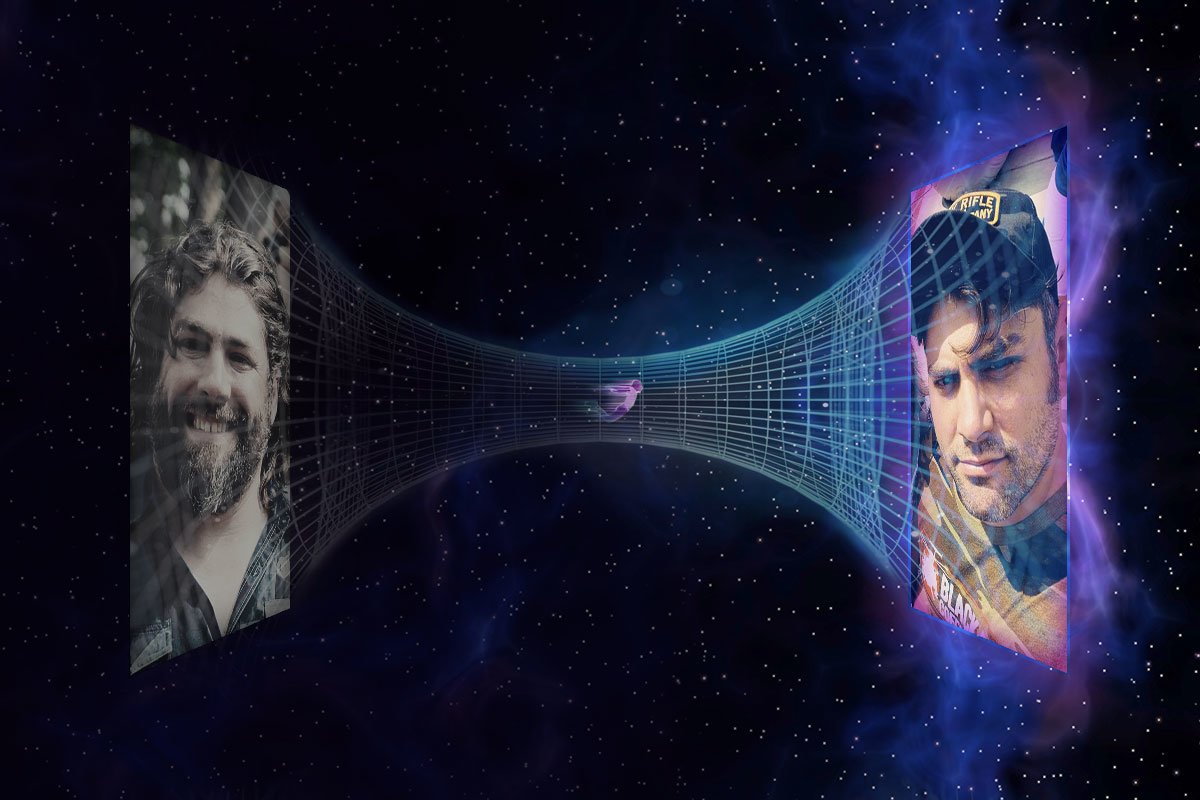
The airman on the bed with white linens in the desert was Black Rifle Coffee Company co-founder and former TAC-P Jarred Taylor. The chemical was 5MeO-DMT, called by some “the God particle.” On a recent trip to a clinic in Mexico with VETS and four other veterans, Taylor underwent the treatment. Yet 5MeO-DMT is the second of two psychedelics used for this particular course of therapy. The other is ibogaine, an extremely powerful and long-lasting hallucinogen.
Both of these drugs are naturally occurring, but little is known about exactly how they work in the brain and body. It is known that ibogaine can cause cardiac arrest in people with certain preexisting heart conditions. Before being treated at the clinic, doctors run blood and urine tests and record in-depth medical history to rule out patients with high-risk factors. The experience is also bookended by several counseling sessions.
Ibogaine is derived from a shrub called Tabernanthe iboga, which is native to Central Africa. Chances are you haven’t heard of it. It was never adopted as a “recreational” drug because it’s difficult to source, and it’s simply too intense for recreational use. Marcus Capone likened his experience with ibogaine to hell, and Taylor called it one of the most terrifying experiences of his life — that’s coming from two guys who have seen combat. Lots of it.
Blotter acid and psychedelic mushrooms aren’t in the same league as these substances. Hell, they’re not even the same sport.
Blotter acid and shrooms aren’t in the same league as these substances. Hell, they’re not even the same sport.
Ibogaine, in particular, lasts about 12 hours and pushes the mind to its limits of perception and introspection while leaving the body pretty much useless. Those who’ve taken it say it dissolves the ego, lays bare one’s innermost self, and then proceeds to force the user to reckon with the darkest and most deeply buried parts of their own mind. It can be a wondrous, blissful journey into universal oneness and a communion with a higher power. Alternately, it can be a hellscape of one’s own deepest fears.
For most people, the drug temporarily obliterates the sense of balance, which typically leads to vomiting. Marcus said he puked for six hours the first time he took ibogaine, but those who have been through it don’t call it puking, they call it “purging.” The idea is that the more memories, negative feelings, and emotions a person needs to be rid of, the more they’ll vomit — a physical manifestation of the mental purging that takes place during the experience.
Taylor said he went into the therapy with no real expectations, only looking for something that might help him deal with issues he’s faced after 11 years on active duty such as memory problems, anxiety, depression, and alcohol abuse.
“I called one guy who I knew had done it, and he was like, ‘Man, it’s life-changing. It’s also very, very difficult.’ Those were the two pieces of information that were given to me,” Taylor said. “I didn’t really know what it would be until I did it.”
He and the four other members of their group were given ibogaine in the form of a capsule containing an appropriate dose based on their height and weight, as determined by the clinic’s medical staff — including a cardiologist. They rode out their trip together in a large room, each man in his own bed hooked up to an EKG monitor with an IV port in his arm, guided by a carefully chosen playlist of music that they would also use in the coming weeks for meditation. They had the option of wearing blindfold-like eyeshades.
“Within the first few seconds of this thing taking hold of you, you realize how powerful your brain is,” Taylor said. “When it would show me someone I love, it would package every good emotion and feeling that goes along with that, times it by a thousand, and throw it at me all at once. It would overtake your whole body. But that happens for all the negative emotions, too, like fear. You think there’s a ceiling to fear. There isn’t. You think, ‘I can only be so scared, and eventually I get numb to it.’ But no. It just gains speed. It packaged all the negativity, fear, anxiety, fucking sadness, and just gave it to me all at once. It puts it in a familiar format, as if it knows it needs to serve this to you in a way you’ll understand. I saw it as doors that would come in front of me that would open, and I’d go to whatever was in there. When we were done, the door would close, and it would go away.”
Matthew “Whiz” Buckley flew F/A-18 Hornet fighters for the Navy for 16 years. He was one of the four in Taylor’s group at the clinic. He, too, had very little idea of what he was getting into.
Buckley didn’t think he needed a treatment as intense as ibogaine or 5MeO-DMT, but after the clinic doctor heard about his service record, how he lost his father at a young age, and about how his sister was killed by a drunk driver when she was 19, he recommended Buckley get the same full course of treatment.
Their experiences were wildly different.
“I was in the bed next to him. We were 4 feet apart,” Buckley said. “The dude went through fucking hell, and my 12 hours was absolute bliss.”
“JT fucked it up, man,” he said with a laugh. “He wore his watch, and he didn’t use his eyeshades. I took my watch off, I put the eyeshades on, and I had 12 hours with God, the universe, my dead sister and father — you wouldn’t believe how good mine was. Then, halfway through, I hear the devil being born next to me as JT was puking. One of the other guys in the room was violently ill, as well, but it’s not sick-to-your-stomach sick, it’s purging. They’re getting rid of shit.
“When JT and I sit together and we tell our stories, he’s like, ‘The bookcase was attacking me.’ And I’m over here talking about being with God, literally under his arm, looking at pieces of my life, at shit that wasn’t meant for me. I can’t put my experience into words, but it was not JT’s.”
“And I’m over here talking about being with God, literally under his arm, looking at pieces of my life, at shit that wasn’t meant for me.”
In the end, the point of it all, according to the Capones who helped facilitate this trip, is to experience a deep, cleansing existential catharsis down to the root of self, which is where many believe the lasting healing effects come from.
As for 5MeO-DMT, it works differently and is even more mysterious than ibogaine.
“We don’t know a whole lot about it,” Hendricks said. “It’s often referred to as the active component in the venom from the Sonoran Desert Toad, which is really interesting. It’s generally vaped, and the experiences appear to be extraordinarily intense. I don’t know that we know a whole lot about 5MeO-DMT, however, or how it works.”
The more common DMT is a powerful psychedelic itself. It’s very closely related to 5MeO-DMT, which is a methoxylated derivative, but its effects are quite different. Whereas DMT is a largely visual hallucinogen that’s usually ingested, 5MeO-DMT has been called the “God particle” and “the death molecule” because of the extremely powerful out-of-body experiences it produces.
Many say DMT is released by the human brain when a person dies. Hendricks said he’s heard that, too, but the science is spotty. There’s no hard proof of that — yet.
“DMT is present in the brain, but is it released upon death? Who knows,” he said. “The brain is a complicated bundle of a number of chemicals. There’s so much we don’t know about the brain, how it functions, or what it does. [DMT] is considered an endogenous chemical, so yes, it’s in our brain in trace amounts. What it exactly does, we don’t entirely know.”
The effects are relatively short-lived, about 15 minutes or so per dose, but that doesn’t really matter to the user, who has no real concept of time. More than one dose may be needed before the user can “let go.” It’s also a solo experience. At this particular clinic, patients sit on a bed surrounded by pillows as the drug is administered.
“First off, it’s a feeling you’ve never felt before, and it’s very confusing and you don’t understand it. So you’re fighting it at first,” Taylor said. “You’re used to being in your own head, talking to yourself, being able to think, being in control, knowing you’re breathing, everything like that. This is on a whole different level. You have to just let it take the wheel. That’s for everything — breathing, your heart beating. You have to just say ‘Okay, I submit.’ And once you do, once you let go, you can experience infinity. There’s no way to explain it. There’s nothing on earth that’s comparable to it at all.”
On an episode of the Free Range American podcast, Taylor talks about waiting for his turn and hearing a group member going through a wild 5MeO-DMT experience and being disconcerted by the prolonged, pained bellowing he heard coming from upstairs. That was Buckley making all the racket at the tail end of his DMT experience.
“As I laid back into the bed, I kept going,” Buckley said. “There wasn’t any bed. You just fall into everything. You literally feel like you are a part of everything. I know what happens when I die now. I felt what it was like to dissolve into everything. I died. All those layers that are between you and God disappear. I did the third hit, and it was like a horse kicking me in the back. I exploded into light, love, energy, God. I fucking transcended like a motherfucker and was with God, and God was me.”
The clinic doctors called this experience “transcendence” and said they’ve only seen it a handful of times.
“I went into a fetal position and every muscle in my body was tense,” Buckley said. “My face was red, like I was being reborn. I remember coming back from being God, or being dead, into this vessel of my body, and there wasn’t room. There was still some shame or anger or whatever that needed to go. I screamed like I never had before in my life, and I remember that I heard it and felt it and I didn’t know what it was. I took a breath and yelled louder and longer, and then just boom, all of it was gone. I fucking opened my eyes and the doctor and Marcus are there with their hands on me, crying. And I’m fine. I’d never been happier.
“Marcus told me the first thing I said was, ‘That’s what freedom feels like,’ like fuckin’ Braveheart or something. Then I said, ‘I can’t wait to tell my wife I’ll love her forever, and I finally know what forever means.’”
Everyone’s experience is different. Three weeks after the experience, Taylor said he still has some work to do. Buckley said he believes he’s a new man.
“The interesting thing is the way I feel now, I’m good,” Buckley said. “I got answers to every question in my life, my future, what I need to be doing, everything, and I’m good.”
Taylor said, “I’m still processing, but I’m latched on. I feel incredibly lucky.”
Regardless of the fact that these psychedelic therapies appear to have a profound healing effect on veterans, most are still listed as Schedule I narcotics in the US. That means veterans and others seeking psychedelic-assisted therapy are stuck working with foreign clinics in the few countries where these drugs are legal.
But things are changing, albeit slowly.
Last week in Texas, a bipartisan bill was signed into law requiring the state to study the safety and effectiveness of MDMA, psilocybin, and ketamine in treating veterans suffering from post-traumatic stress — a huge stride forward.
“I think the impact we can have state-by-state is particularly exciting, but there’s also the federal components — changing laws, changing veteran health care,” Amber Capone said. “If VETS went away completely because it became unnecessary, it would be a win. I don’t think it will happen in two to five years, but maybe in 10.”
Restrictions on psychedelic drugs have been loosened in Oregon, too, while California and a handful of other states are on the same track.
“VETS initially existed to send veterans outside the country they fought for to get help for injuries sustained because of their service. Bringing these therapies inside the US is absolutely pivotal,” Amber said. “The demand so outpaces our ability to provide support, it’s staggering. Now we have to work on changing hearts, minds, laws, healthcare options.”
This article was originally published on Free Range American.
Read Next: Texas Passes Law To Study Possible Benefits of Psychedelics for Veterans
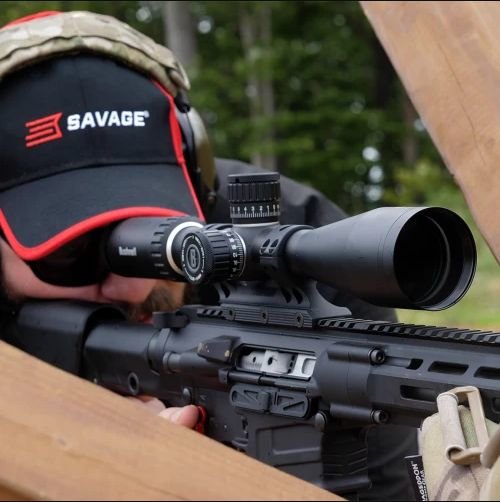
David Maccar is the managing editor for Free Range American and a contributing writer for Coffee or Die Magazine. He has been working in the outdoor industry as a print and digital editor and writer for various tactical and outdoor brands, including Field & Stream, Outdoor Life, SHOT Business, Range365, Gun Digest, Tactical Life, Guns of the Old West, Ballistic, and others for more than a decade. He is a hunter, a target shooter, and a huge gun and movie nerd who lives in the Northeast with his wife, Madeleine, and faithful Texas heeler, Hunter.
BRCC and Bad Moon Print Press team up for an exclusive, limited-edition T-shirt design!
BRCC partners with Team Room Design for an exclusive T-shirt release!
Thirty Seconds Out has partnered with BRCC for an exclusive shirt design invoking the God of Winter.
Lucas O'Hara of Grizzly Forge has teamed up with BRCC for a badass, exclusive Shirt Club T-shirt design featuring his most popular knife and tiomahawk.
Coffee or Die sits down with one of the graphic designers behind Black Rifle Coffee's signature look and vibe.
Biden will award the Medal of Honor to a Vietnam War Army helicopter pilot who risked his life to save a reconnaissance team from almost certain death.
Ever wonder how much Jack Mandaville would f*ck sh*t up if he went back in time? The American Revolution didn't even see him coming.
A nearly 200-year-old West Point time capsule that at first appeared to yield little more than dust contains hidden treasure, the US Military Academy said.



